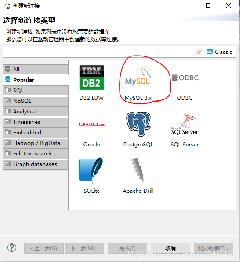MyBatis使用級聯(lián)操作解決lombok構(gòu)造方法識別失敗問題
先解決一下idea無法識別lombok構(gòu)造方法的問題,解決方案是在idea的插件中下載并安裝lombok插件。
MyBatis級聯(lián)操作,列舉最簡單的student-classes(學(xué)生與班級)的關(guān)系表:
create table if not exists student ( id int primary key auto_increment, name varchar(20) not null comment ’學(xué)生姓名’, cid int not null comment ’班級id’);
create table if not exists classes ( id int primary key auto_increment, name varchar(20) not null comment ’班級名’);
接下來,創(chuàng)建關(guān)系表對應(yīng)的實(shí)體類:
@Datapublic class Student { private long id; private String name; private Classes classes;}
@Datapublic class Classes { private long id; private String name; private List<Student> students;}
在repository包下新建StudentRepository接口:
public interface StudentRepository { public Student findById(long id);}
然后創(chuàng)建對應(yīng)的mapper文件StudentRepository.xml:
<?xml version='1.0' encoding='UTF-8' ?><!DOCTYPE mapper PUBLIC '-//mybatis.org//DTD Mapper 3.0//EN' 'http://mybatis.org/dtd/mybatis-3-mapper.dtd'><mapper namespace='com.wts.repository.StudentRepository'> <resultMap type='com.wts.entity.Student'> <id column='id' property='id'></id> <result column='name' property='name'></result> <association property='classes' javaType='com.wts.entity.Classes'> <id column='cid' property='id'></id> <result column='cname' property='name'></result> </association> </resultMap> <select parameterType='long' resultMap='studentMap'> select s.id,s.name,c.id as cid,c.name as cname from student s,classes c where s.id = #{id} and s.cid = c.id </select></mapper>
注意這里有幾個限制:
1.命名空間,xml文件的namespace必須是對應(yīng)接口的全類名
2.Statement標(biāo)簽的id必須與接口方法相同,其中parameterType為參數(shù),resultType為返回類型,復(fù)雜類型用resultMap
3.復(fù)雜類型resultMap中多對一用association,一堆多用集合collection
MyBatis執(zhí)行sql返回的結(jié)果集會和關(guān)系對象映射起來,注意列與字段的對應(yīng)關(guān)系。
然后將mapper引入:
<mappers> <mapper resource='com/wts/repository/StudentRepository.xml'></mapper></mappers>
編寫測試方法:
@Testpublic void test03() { InputStream inputStream = AppTest.class.getClassLoader().getResourceAsStream('config.xml'); SqlSessionFactory sqlSessionFactory = (new SqlSessionFactoryBuilder()).build(inputStream); try (SqlSession sqlSession = sqlSessionFactory.openSession()) { // 級聯(lián)查詢 StudentRepository studentRepository = sqlSession.getMapper(StudentRepository.class); System.out.println(studentRepository.findById(1L)); }}
以上就是本文的全部內(nèi)容,希望對大家的學(xué)習(xí)有所幫助,也希望大家多多支持好吧啦網(wǎng)。
相關(guān)文章:
1. DBeaver連接MySQL的超詳細(xì)步驟2. SQLite教程(十):內(nèi)存數(shù)據(jù)庫和臨時數(shù)據(jù)庫3. Oracle的PDB數(shù)據(jù)庫創(chuàng)建DIRECTORY時遇到ORA-65254問題及解決方法4. 淺談MySQL和mariadb區(qū)別5. 教你如何收集Oracle進(jìn)程中的SQL跟蹤信息6. 詳解MySQL InnoDB存儲引擎的內(nèi)存管理7. SQLite3數(shù)據(jù)庫的介紹和使用教程(面向業(yè)務(wù)編程-數(shù)據(jù)庫)8. mysql查詢的控制語句圖文詳解9. Windows10系統(tǒng)中Oracle完全卸載正確步驟10. SQL Server 2022 AlwaysOn新特性之包含可用性組詳解

 網(wǎng)公網(wǎng)安備
網(wǎng)公網(wǎng)安備